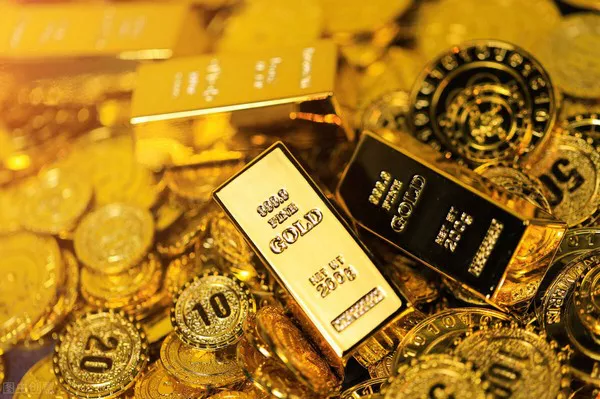The international gold market serves as a cornerstone of the global economy, attracting investors, central banks, and traders alike. Understanding the key players and trends within this dynamic market is essential for anyone looking to navigate the intricacies of gold trading and investment. In this article, we explore the major participants in the international gold markets and analyze the prevailing trends shaping the industry.
I. The Global Gold Market Landscape
1. Central Banks: Central banks are significant players in the international gold market. Many central banks hold gold reserves as part of their overall foreign exchange reserves. These reserves provide stability and act as a hedge against currency fluctuations, economic uncertainties, and geopolitical risks.
2. Bullion Banks: Bullion banks play a pivotal role in facilitating gold transactions. These financial institutions, often with a global presence, provide a range of services such as trading, storage, and financing for market participants. Bullion banks act as intermediaries between producers, consumers, and investors in the gold market.
3. Mining Companies: Gold mining companies are primary contributors to the international gold supply. These companies extract gold from mines worldwide and play a crucial role in influencing the overall market dynamics. Their production levels and exploration activities impact the availability and pricing of gold.
II. Key Trends in the International Gold Market
1. Technological Innovations: The gold market is experiencing a wave of technological innovations. Blockchain technology is being employed to enhance transparency in the supply chain, providing consumers with information about the origin and authenticity of gold products. Additionally, digital platforms are making gold more accessible to retail investors through digital gold products.
2. Sustainable and Ethical Sourcing: There is a growing emphasis on sustainable and ethical sourcing in the gold industry. Concerns about environmental impact and social responsibility have led to increased scrutiny of mining practices. Responsible sourcing initiatives and certifications are gaining prominence, influencing market trends and consumer preferences.
3. Shifting Demand Patterns: Demand for gold is not only driven by investment and jewelry but also by technological applications. The electronics industry, in particular, relies on gold for its conductivity and corrosion resistance. As technology continues to advance, the demand for gold in electronics and other industrial sectors is expected to increase.
III. Major Gold Exchanges and Trading Hubs
1. London Bullion Market Association (LBMA): The LBMA is a key player in the international gold market and is renowned for setting the global standard for gold and silver. London, with its deep-rooted history in gold trading, serves as a major trading hub, and the LBMA oversees the accreditation of refineries, storage facilities, and trading practices.
2. Chicago Mercantile Exchange (CME): The CME Group, through its COMEX division, operates one of the world’s largest futures and options exchanges for gold and other precious metals. The CME’s gold futures contracts are widely used by institutional investors and serve as benchmarks for global gold prices.
3. Shanghai Gold Exchange (SGE): The SGE has emerged as a crucial player in the international gold market, reflecting the growing influence of Asian markets. China, the world’s largest consumer of gold, utilizes the SGE for physical gold trading. The exchange facilitates both domestic and international transactions, contributing to the global gold trade.
IV. Global Gold Price Determinants
1. Supply and Demand Dynamics: The fundamental principles of supply and demand significantly impact gold prices. Changes in production levels, central bank buying or selling, and shifts in consumer demand for jewelry and investment purposes all influence the delicate balance between supply and demand, thereby affecting prices.
2. Inflation and Economic Uncertainty: Gold is often viewed as a hedge against inflation and economic uncertainty. During periods of economic instability or when inflationary pressures rise, investors tend to turn to gold as a safe haven, driving up demand and prices.
3. Interest Rates and Currency Movements: The relationship between gold prices, interest rates, and currency movements is intricate. Generally, when interest rates are low, the opportunity cost of holding gold diminishes, making gold more attractive. Additionally, gold prices are influenced by fluctuations in major currencies, especially the U.S. dollar.
V. FAQs
1. How do central banks use gold reserves?
Central banks use gold reserves as a form of financial security. Gold provides stability to a country’s currency reserves, acting as a hedge against economic uncertainties, currency fluctuations, and geopolitical risks.
2. What is the role of blockchain in the gold market?
Blockchain technology is employed in the gold market to enhance transparency in the supply chain. It allows for the tracking of gold from its source, providing consumers with information about the origin and authenticity of gold products.
3. How does ethical sourcing impact the gold industry?
Ethical sourcing has a significant impact on the gold industry by promoting responsible mining practices. Initiatives for sustainable and ethical sourcing address environmental and social concerns, influencing market trends and consumer preferences.
4. Why is London a major hub for gold trading?
London has a rich history in gold trading, and the city is a major hub due to institutions like the London Bullion Market Association (LBMA). The LBMA sets global standards for gold trading, and London’s infrastructure supports various aspects of the gold market, including refining, storage, and trading practices.
5. How do interest rates and currency movements affect gold prices?
The relationship between gold prices, interest rates, and currency movements is complex. Generally, low-interest rates make gold more attractive as the opportunity cost decreases. Gold prices are also influenced by currency fluctuations, especially those involving the U.S. dollar, as gold is priced in dollars on global markets.

